Drinking Vodka With Elderly Settlers Who Refuse to Leave Chernobyl’s Exclusion Zone

Radiation warning sign in Pripyat. (Photo: Public Domain/WikiCommons)
Let me introduce you to Ivan Ivanich. He is a proud fascist who would truly like to kill us all, however, approaching 90 he appeared to pose little threat. To substantiate this further, he is one of the friendliest men I have ever met. Ivan will talk your ear off, even if you don’t understand his raspy Ukrainian, as his wife stands by in silence. She listens stoically, likely having endured this prattle for decades. The Ivaniches are settlers living about 13 miles east of Reactor 4, which had an epic catastrophe here in Chernobyl in early 1986.
Heading west out of the town of Chernobyl, we pulled off on a dusty dirt road about a mile before the Belarus border. The people living here are called “self-settlers,” even though there are only five of them and Ivan hates them all. He confides that he would prefer a different group of people and admits that his wife falls into this category at times. Fortunately, there are many abandoned homes nearby where he can go spend the night when domestic tensions escalate.

A quick look at the satellite imagery does reveal an eerie expanse of overgrown neighborhoods (around lat 58.288º, long 30.322º) and abandoned farms, far larger than we had the time or the bushwhacking equipment to explore.

A view across Chernobyl in 2015. (Photo: Michał Huniewicz/flickr)
On an April evening of 1986, during a routine test, Reactor 4 erupted in what has been described as a brilliant light show, as a result of massive quantities of steam and fission products being released into the atmosphere. This resulted in a deadly radioactive fire which burned for 10 days. While the explosion alone did enough damage, the resulting fire spread contamination across Europe, heavily in the Ukrainian town of Pripyat, and crept into what is now Belarus. This prompted the USSR to evacuate the area, albeit slowly as nuclear catastrophe is typically bad press.
The thriving community abandoned the area and an exclusion zone of 30 kilometers was established. It remains off limits to this day with an inner exclusion zone of even higher levels of radiation, which is 10 kilometers from the reactor.
In the years following the evacuation, however, a little over 1,000 “self-settlers” made their way back to their homes inside the 30-kilometer zone. They were mostly older people who did not believe in an invisible enemy. This was not the case for Ivan and his wife.

Abandoned neighborhood houses. (Photo: Adam McGhee)
Though they drink from a well just outside their home, eat their own crops and hunt the local critters (less these days as it is becoming more difficult for Ivan to hunt), this couple does not disregard radiation as a myth. The Ivaniches know that their lifelong home was upwind during the disaster, and is thus in a relatively safe area as far as contaminated zones go.
They are also not bothered by the continuing threat from the nearby reactor, which was set to be enclosed this year. This $1 billion project has more than doubled its projected cost, and the completion date has now been pushed back to the end of 2017. This international project only a few miles away does not worry Ivan, although many people in nearby European countries are losing sleep over the condition of the original sarcophagus, which is rusted and collapsing due to hasty construction after the accident.

The entrance sign for Chernobyl. (Photo: Adam McGhee)
At the height of the Cold War, when the Ukraine was a satellite of the Soviet Union, Ivan worked first in construction then security at the Chernobyl Nuclear Power Plant. The house he now lives in was built completely out of bricks and other materials smuggled home after a hard day’s work on the construction site. He is proud of the communist era, a time where opportunities like that existed, as modern construction jobs frown upon taking building supplies.
Ivan is also upset with the Ukrainian government, his major complaint being the lack of adequate health care. While part of the Soviet Union, mobile medical treatment was provided to these distant urban villages. Today the Ukrainian government has trouble funding such benefits, especially during the current war over Crimea. The fact that this zone is supposed to be unpopulated does not help matters.
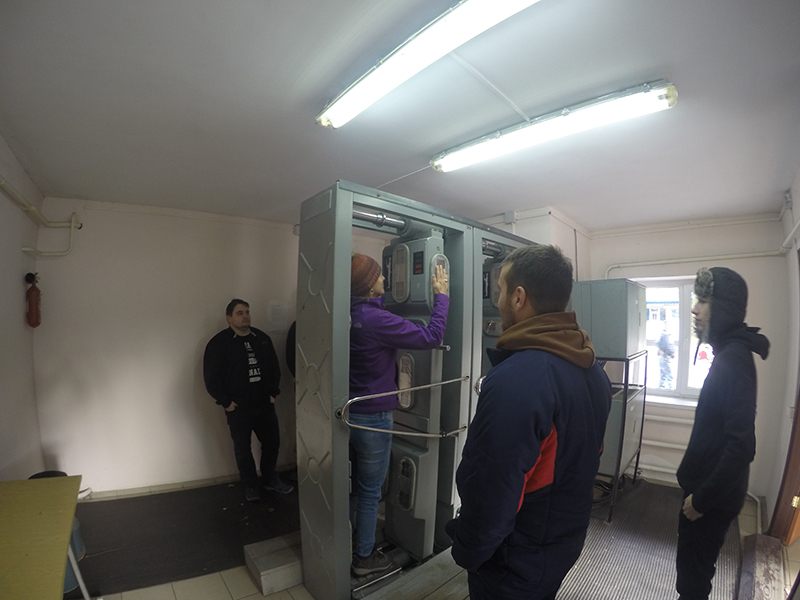
Full body radiation scanners. (Photo: Adam McGhee)
These “self-settlers” have gained a minor amount of notoriety in the western media as a stubborn and courageous group, and the science does seem to be in their favor. Radiation is a difficult hazard to explain easily, but comparing a lethal dose (around 500 roentgens) to one mile of roadway can be a useful allegory to describe its effects. It can affect us based on rate and accumulation–or distance in the road analogy. Most countries have a maximum dose for the general population of say, six inches on a mile of road.
At 100 yards your risk of cancer may begin to increase slightly within the entirety of your lifetime. Racing forward to the half mile mark, you may begin to feel some symptoms and much higher likelihood of cancer, before you arrive at your lethal dose at one mile. Most of these settlers are living within the first few feet of this metaphorical mile, so at their age, any effects will be minimal.
This is different for children, which is why the Ivaniches’ two sons joined the rest of their generation in Kiev. Every settler in Chernobyl is elderly. This is not simply because children are not authorized inside the exclusion zone, but because the older generation is far more willing to toil. Ivan explains that in Kiev, a bag of potatoes may cost a few dollars, while here the settlers work in generally barren fields for months to cultivate sustenance. Most people would not go to this amount of trouble for a sack of potatoes, they would simply go to the store.
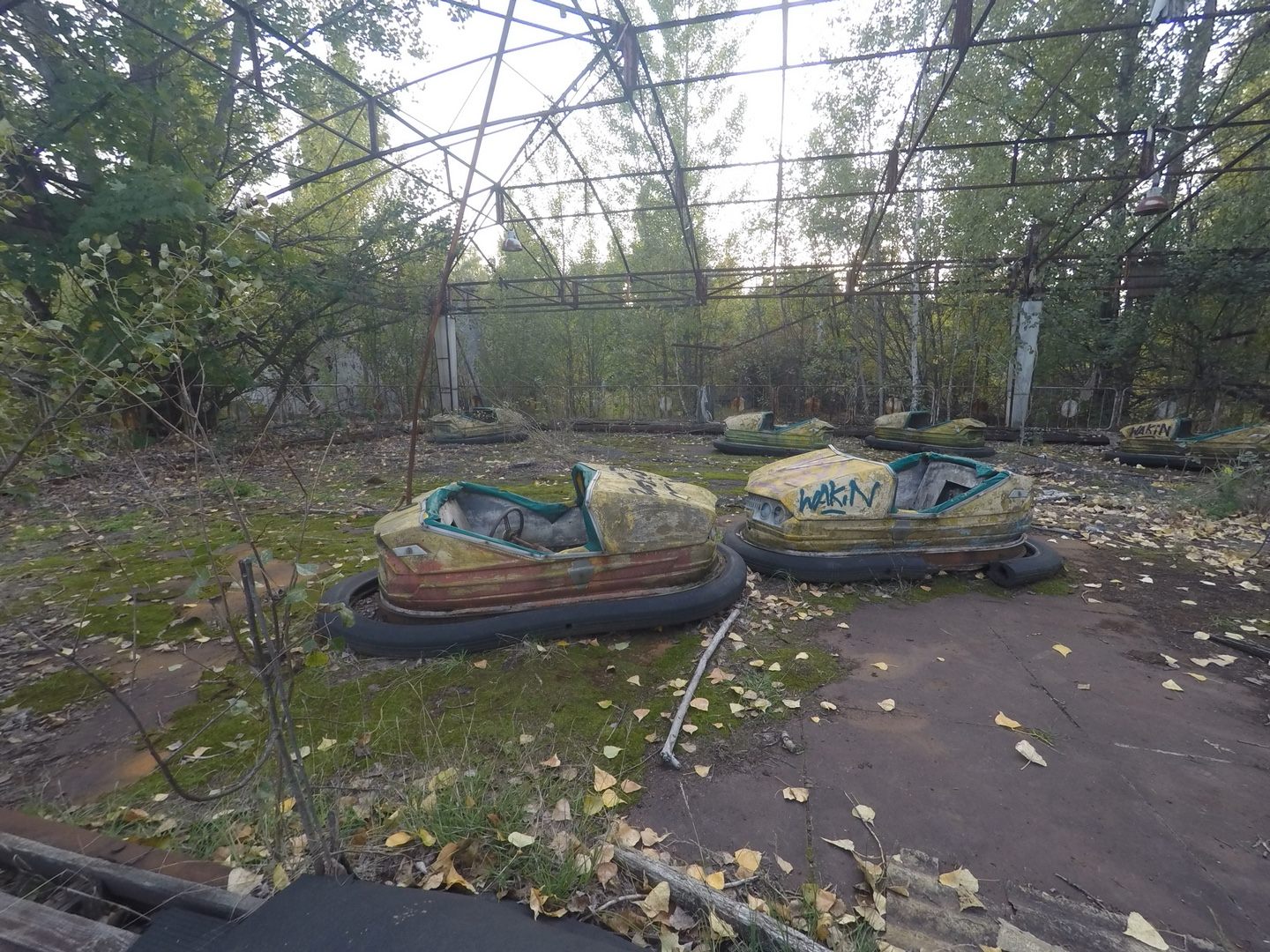
Disused bumper cars. (Photo: Adam McGhee)
The settler’s potato-dominant diet is supplemented with wild mushrooms and the occasional unmarked liter of unidentified liquor, proffered when inquisitive visitors drop by. I was beginning to appreciate the source of Ivan’s enthusiasm for visiting with us as we presented this wine....or was it tinted homemade vodka? From the taste, it could have been either.
He has a car which has not run for many years, but he eagerly ushered us to his garage for a look. Ivan’s wife trudged back into the house, glad to be rid of these intrusive visitors and escape Ivan’s yapping. “It is a deathtrap!” he repeats in Ukrainian, though he is obviously proud of the car. Though his car has spent a decade trapped in this garage, it seems like Ivan may have been working on it when we arrived. He had initially rushed to meet us from this garage, with grease under his fingernails and smelling of oil.
“It would catch fire regularly,” he tells us through a translator. “The engine is in the rear and it is only air cooled by two small side vents.” This minor design flaw has caused it to overheat and burst into flames numerous times over the years.
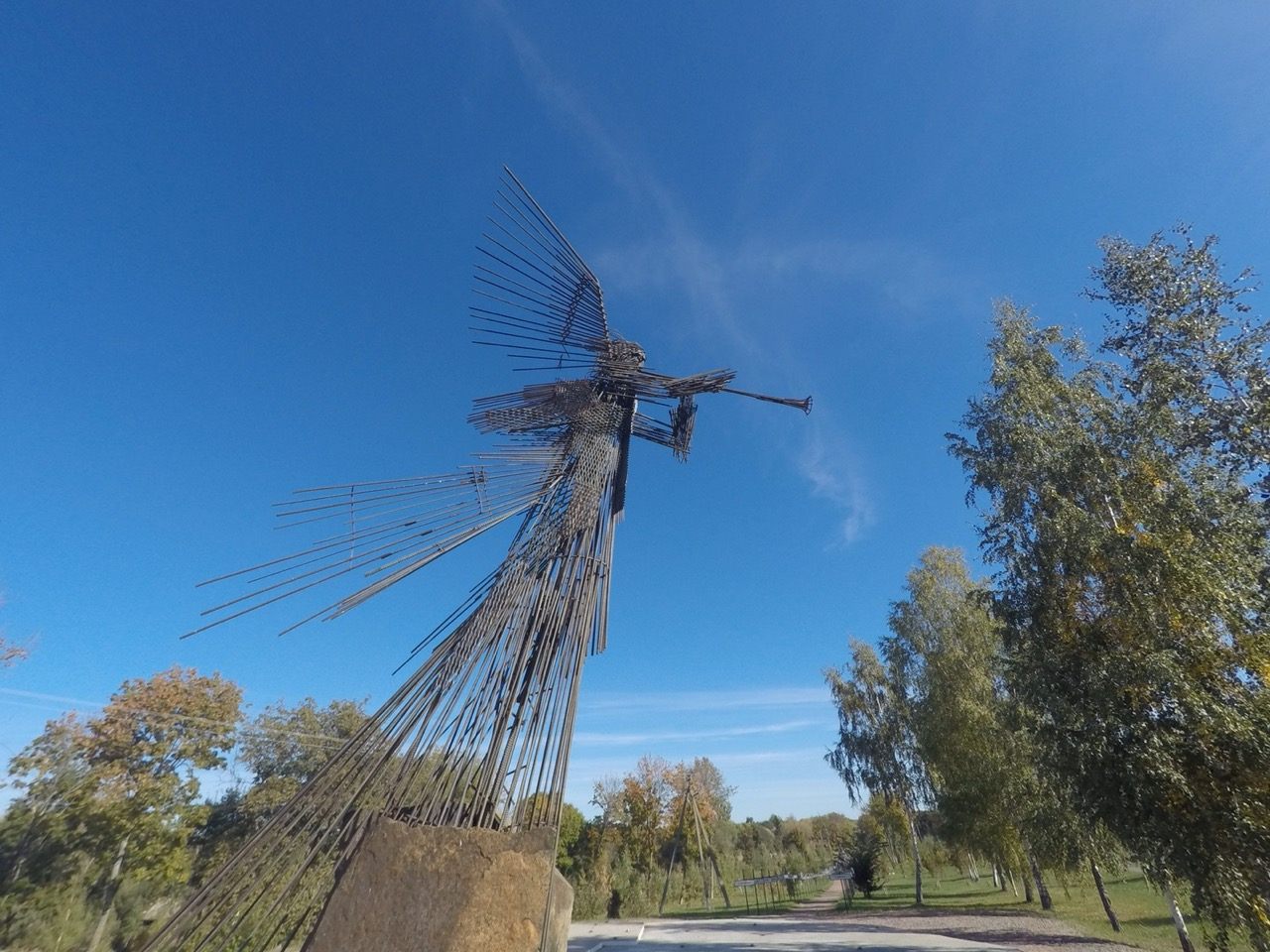
A memorial statue inside the Chernobyl exclusion zone. (Photo: Adam McGhee)
Life in the exclusion zone is simple, yet dangerous. The couple’s neighbor passed away a few days prior to our arrival, falling while trying to fixing her roof. She was believed to be in her nineties. Ivan is one of the few men left, as most have succumbed to severe alcohol abuse and the inevitably shorter male lifespan.
The Ivaniches have evaded Soviet-imposed famine, invasion by the Nazis, and the greatest nuclear accident in history. But the most significant close call this stubborn old Ukrainian wishes to describe is surviving his prized vehicle. As we drove off under the perpetually overcast sky, Ivan was returning to his lifetime project, and deathtrap.




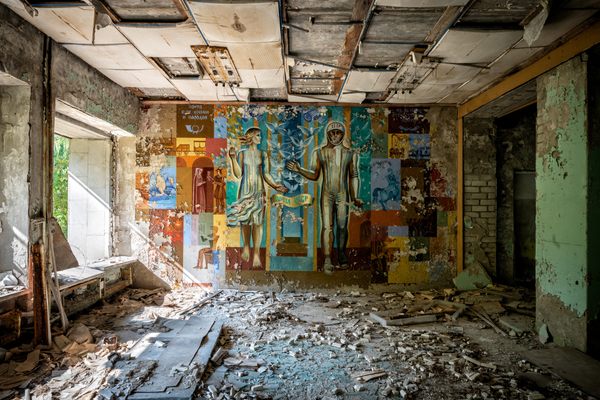

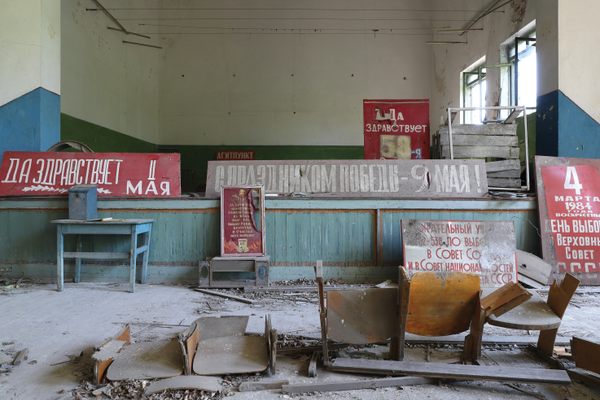


Follow us on Twitter to get the latest on the world's hidden wonders.
Like us on Facebook to get the latest on the world's hidden wonders.
Follow us on Twitter Like us on Facebook